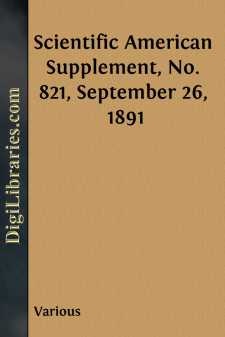Categories
- Antiques & Collectibles 13
- Architecture 36
- Art 48
- Bibles 22
- Biography & Autobiography 816
- Body, Mind & Spirit 145
- Business & Economics 28
- Children's Books 17
- Children's Fiction 14
- Computers 4
- Cooking 94
- Crafts & Hobbies 4
- Drama 346
- Education 58
- Family & Relationships 59
- Fiction 11834
- Foreign Language Study 3
- Games 19
- Gardening 17
- Health & Fitness 34
- History 1378
- House & Home 1
- Humor 147
- Juvenile Fiction 1873
- Juvenile Nonfiction 202
- Language Arts & Disciplines 89
- Law 16
- Literary Collections 686
- Literary Criticism 179
- Mathematics 13
- Medical 41
- Music 40
- Nature 179
- Non-Classifiable 1768
- Performing Arts 7
- Periodicals 1453
- Philosophy 66
- Photography 2
- Poetry 897
- Political Science 203
- Psychology 45
- Reference 154
- Religion 516
- Science 126
- Self-Help 85
- Social Science 82
- Sports & Recreation 34
- Study Aids 3
- Technology & Engineering 59
- Transportation 23
- Travel 463
- True Crime 29
Our website is made possible by displaying online advertisements to our visitors.
Please consider supporting us by disabling your ad blocker.
Scientific American Supplement, No. 821, September 26, 1891
by: Various
Categories:
Description:
Excerpt
THE NEW LABOR EXCHANGE, PARIS.
The new Labor Exchange is soon to be inaugurated. We give herewith a view of the entrance facade of the meeting hall. The buildings, which are the work of Mr Bouvard, architect, of the city of Paris, are comprised within the block of houses whose sharp angle forms upon Place de la Republique, the intersection of Boulevard Magenta and Bondy street. One of the entrances of the Exchange is on a level with this street. The three others are on Chateau d'Eau street, where the facade of the edifice extends for a length of one hundred feet. From the facade and above the balcony that projects from the first story, stand out in bold relief three heads surrounded by foliage and fruit that dominate the three entrance doors. These sculptures represent the Republic between Labor and Peace. The windows of the upper stories are set within nine rows of columns, from between the capitals of which stand out the names of the manufacturers, inventors, and statesmen that have sprung from the laboring classes. Upon the same line, at the two extremities of the facade, two modillions, traversed through their center by palms, bear the devices "Labor" and "Peace." Above, there is a dial surmounted by a shield bearing the device of the city of Paris.
The central door of the ground floor opens upon a large vestibule, around which are arranged symmetrically the post, telegraph, telephone, and intelligence offices, etc. Beyond the vestibule there is a gallery that leads to the central court, upon the site of which has been erected the grand assembly hall. This latter, which measures 20 meters in length, 22 in width, and 6 in height, is lighted by a glazed ceiling, and contains ten rows of benches. These latter contain 900 seats, arranged in the form of circular steps, radiating around the president's platform, which is one meter in height. A special combination will permit of increasing the number of seats reserved for the labor associations on occasions of grand reunions to 1,200. The oak doors forming the lateral bays of the hall will open upon the two large assembly rooms and the three waiting rooms constructed around the faces of the large hall. In the assembly rooms forming one with the central hall will take place the deliberations of the syndic chambers. The walls of the hall will, ere long, receive decorative paintings.--L'Illustration.
Roofing paper was first used in Scandinavia early as the last century, the invention being accredited to Faxa, an official of the Swedish Admiralty. The first tar and gravel roofs in Sweden were very defective. The impregnation of the paper with a water-proofing liquid had not been thought of, and the roofs were constructed by laying over the rafters a boarding, upon which the unsaturated paper, the sides of which lapped over the other, was fastened with short tacks. The surface of the paper was next coated with heated pine tar to make it waterproof. The thin layer of tar was soon destroyed by the weather, so that the paper, swelled by the absorption of rain water, lost its cohesiveness and was soon destroyed by the elements....












